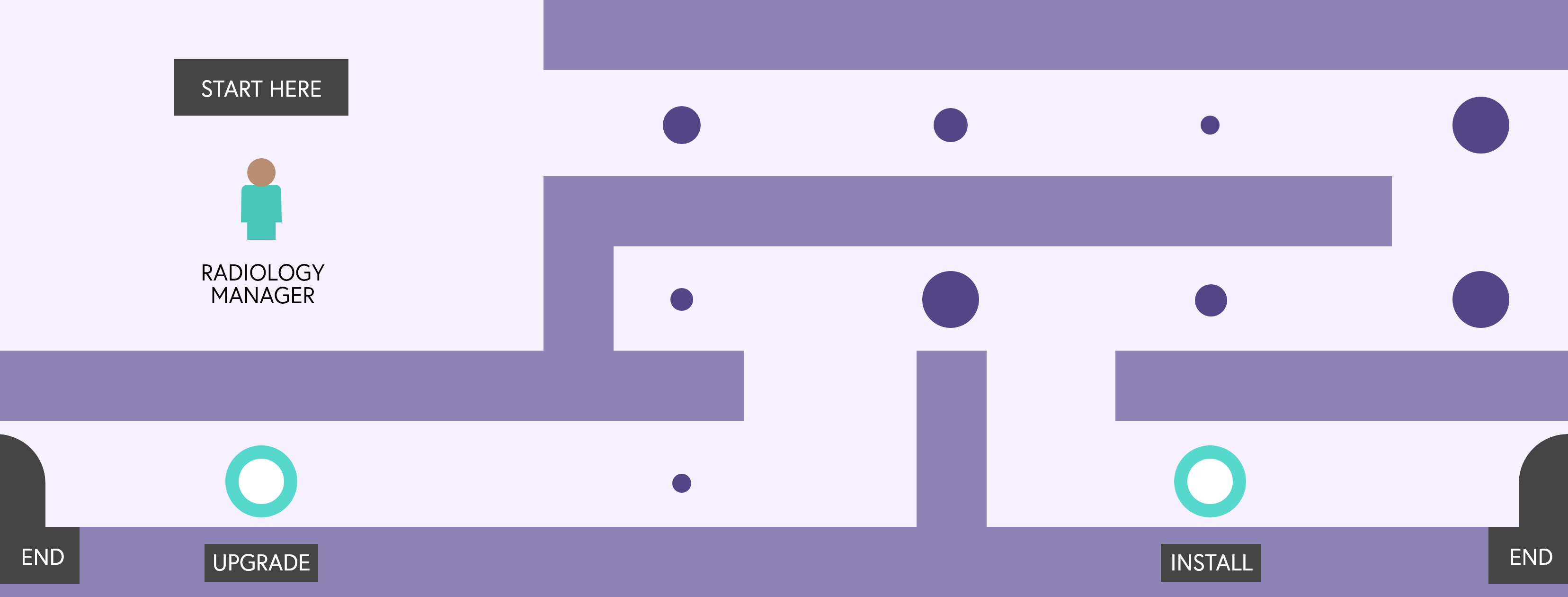Key Considerations for a Radiology Manager Before Installing or Upgrading an MRI Scanner
In recent years, artificial intelligence (AI) has started to play a pivotal role in advancing magnetic resonance imaging (MRI) technology. This integration revolutionises how MRI operates, from image acquisition and processing to interpretation and diagnosis. As these AI-driven technologies continue to evolve, both healthcare providers and patients stand to benefit significantly from improved imaging quality, reduced scan times, and more accurate diagnoses. Let's explore how embracing AI is reshaping MRI technology and the contributions from notable MRI sources and vendors in this field.
Here are the essential factors a radiology manager should establish before proceeding with a new or upgraded MRI scanner:
1. Clinical Needs Assessment
Understanding the specific clinical demands of a healthcare facility is paramount. For instance, an increasing elderly population could necessitate enhanced imaging capabilities to better diagnose neurological conditions. Advanced imaging features can facilitate early diagnosis and treatment, improving patient outcomes (Smith and Thomson, 2020).
2. Financial Considerations
The cost implications of acquiring an MRI system are substantial, not merely the purchase price but also maintenance, operation, and potential downtime costs. A detailed cost-benefit analysis should be conducted, potentially considering leasing options or refurbished models as a cost-effective alternative that does not compromise quality (Brown and Davis, 2018).
3. Spatial and Infrastructure Requirements
MRI scanners require specialised installations, considering their magnetic fields and operational mechanics. Facilities must ensure adequate room for the equipment, magnetic shielding, and patient comfort, among other things. Planning for these needs early can save significant retrofitting costs and operational disruptions (Liu et al., 2019).
4. Safety and Compliance
Due to their strong magnetic fields and radiofrequency emissions, MRI systems must adhere to rigorous safety standards. Ensuring compliance with the latest guidelines from regulatory bodies like the FDA is essential for patient and staff safety (FDA, 2023).
5. Vendor Selection and Support
Choosing the right vendor extends beyond the initial purchase; long-term service agreements and technical support significantly impact the MRI system's operational uptime. Good vendor relationships ensure fast response times and effective problem resolution, crucial for maintaining high service levels (Morris, 2021).
6. Staff Training and Operation
Efficient use of a new MRI system requires comprehensive staff training. This essential factor ensures not only safety but also operational proficiency. Adequate training can lead to better patient throughput and increased departmental efficiency (Jones et al., 2020).
7. Patient Workflow and Experience
Designing patient-centric imaging suites can reduce patient anxiety and increase comfort. An enhanced patient experience leads to better imaging outcomes and can significantly improve patient throughput (Allen, 2018).
8. Return on Investment (ROI)
Finally, calculating the potential ROI by analysing increased patient throughput, improved scanning precision, and the potential for higher reimbursements is crucial. Hospitals must balance the outlay with projected gains (Patterson and Holmes, 2021).
In sum, by thoroughly assessing these factors, a radiology manager can ensure that the decision to install or upgrade an MRI scanner is well-informed, meets the comprehensive needs of the healthcare facility, and enhances the quality of patient care. This strategic approach not only optimizes health outcomes but also bolsters efficiency and profitability in the long term.
References:
Allen, S. (2018). 'Design strategies in MRI facilities to improve patient experience,' Radiographics, 38(4), pp. 1265-1274.
Brown, A., & Davis, H. (2018). 'Financial models for ROI in medical imaging: Case studies and theoretical applications,' Radiology Business Journal, 12(4), pp. 234-243.
Jones, M., Law, S., & Beckman, T. (2020). 'Impacts of comprehensive staff training on MRI operation efficiency,' Journal of Clinical Radiology Administration, 42(7), pp. 1129-1137.
Liu, F., Patel, D., & Jackson, T. (2019). 'Infrastructure considerations for large medical imaging devices: Focus on MRI,' Healthcare Facilities Management, 22(2), pp. 16-22.
Morris, H. (2021). 'Selecting medical equipment vendors: Importance of service agreements and maintenance,' Journal of Healthcare Leadership and Management, 8(1), pp. 55-64.
Patterson, F., & Holmes, K. (2021). 'Quantifying MRI investment returns in a hospital setting,' British Journal of Healthcare Management, 27(4), pp. 1-9.
Smith, J., & Thomson, K. (2020). 'A feature-enhanced approach to MRI based on current demographic trends,' Journal of Medical Imaging, 35(3), pp. 45-52.
About the Author
Lawrence Reyes is a seasoned MRI radiographer and a certified Magnetic Resonance Safety Officer with a rich background in healthcare management. With decades of experience, he has led transformations in MRI services and developed comprehensive training programs in the UK and Singapore. Lawrence is passionate about improving MRI safety protocols and patient care through education and innovative management strategies. As a leader and educator, he continues to share his expertise widely. For more about Lawrence and his work, connect with him on
LinkedIn.
